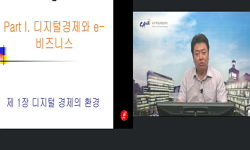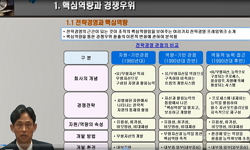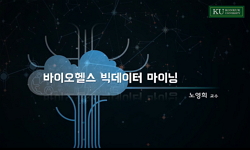The term of Knowledge Management which was first used by a European management conference with a theme of management of knowledge( perspectives of a new opportunity) in 1986 appeared to obtain the maximum effect of knowledge accumulated for business ...
http://chineseinput.net/에서 pinyin(병음)방식으로 중국어를 변환할 수 있습니다.
변환된 중국어를 복사하여 사용하시면 됩니다.
- 中文 을 입력하시려면 zhongwen을 입력하시고 space를누르시면됩니다.
- 北京 을 입력하시려면 beijing을 입력하시고 space를 누르시면 됩니다.
https://www.riss.kr/link?id=T13036578
- 저자
-
발행사항
광주 : 전남대학교 대학원, 2013
- 학위논문사항
-
발행연도
2013
-
작성언어
한국어
- 주제어
-
DDC
020 판사항(22)
-
발행국(도시)
광주
-
기타서명
(A) Bibliometric Approach of Knowledge Management in Library and Information
-
형태사항
vii, 84 p. : 삽도 ; 30 cm.
-
일반주기명
전남대학교 논문은 저작권에 의해 보호받습니다.
지도교수: 장우권
참고문헌 : p.78-81 - 소장기관
-
0
상세조회 -
0
다운로드
부가정보
다국어 초록 (Multilingual Abstract)
However, a library is a field of producing and using knowledge contents based on knowledge management, and the Library and Information Science has established its academic area and theoretical base as a science closely related to social atmosphere. The purposes of this research are to quantitatively analyse the current status of studies on knowledge management as a main key word of the 21st century in academic atmosphere, and based on the result, to develop a knowledge management road map in the Library and Information Science.
For the purposes, this research analysed research papers on knowledge management using KnowledgeMatrix, a software of Scientometrics developed by Korea Institute of Science and Technology Information, targeting five journals of the Library and Information Science(Information Management Research, Journal of Information Management Society, Korea Library·Journal of Information Society, Journal of KLISS, and Journal of Korean Biblia Society of Library and Information Science).
The results of analysing the research on knowledge management in Library and Information Science using KnowledgeMatrix are presented as follows:
First, research on appeared first in the five journals of Library and Information Science in 1990, which was a 'knowledge expression in a knowledge-based system' presented by Jeong, Yong-Mi, a researcher of Yonsei University in the journal of KLISS. Research on knowledge management has been continuously conducted since 1998 and 20 research papers were published in 2002. It is annually consistent until June 30, 2012, but is gradually decreasing.
Second, the number of authors of research papers to be analysed were 121 regardless of main authors or co-authors, and 41 papers were published in Journal of Information Management Society followed by 22 in Korea Library·Journal of Information Society and Journal of KLISS, 17 in Information Management Research and 14 in Journal of Korean Biblia Society of Library and Information Science.
Third, the networks of knowledge management researcher in Library and Information Science were line-type, round-type, mesh-type and complex-type.
Fourth, central researchers in knowledge management research were Chang, Woo-Kwon, Kim Hyon-Hee, No, Jeong-Ran, Kim Seong-Hee, Lee, Hong-Jae and Choi, Hee-Yun who corresponded to 5% of top researchers, and their research networks were complex-type and line-type.
Fifth, the knowledge management researchers belonged to 62 institutes, 18 had no networks and 14 had line-type network research conducted. 30 institutes remained were divided into three groups and had complex-type network research conducted.
Sixth, central institutes of knowledge management research were Jungang University, Myongji University and KISTI which were ranked 5% of top institutes in our country based on the number of institutes whose authors were confirmed.
Seventh, the number of key words to be analysed in this study were a total of 407. 23 appeared more than three times and 22 were connected in a network.
Eighth, central key words of the knowledge management research were ‘knowledge management,’ ‘knowledge management system,’ ‘knowledge sharing’ and ‘knowledge management system’ in high concentration and density and based on the results.
This research based on the analysis results developed a knowledge management road map of Library and Information Science.
The term of Knowledge Management which was first used by a European management conference with a theme of management of knowledge( perspectives of a new opportunity) in 1986 appeared to obtain the maximum effect of knowledge accumulated for business management. Then, it has become a main key word which is diversly applied for practical studies as well as business.
However, a library is a field of producing and using knowledge contents based on knowledge management, and the Library and Information Science has established its academic area and theoretical base as a science closely related to social atmosphere. The purposes of this research are to quantitatively analyse the current status of studies on knowledge management as a main key word of the 21st century in academic atmosphere, and based on the result, to develop a knowledge management road map in the Library and Information Science.
For the purposes, this research analysed research papers on knowledge management using KnowledgeMatrix, a software of Scientometrics developed by Korea Institute of Science and Technology Information, targeting five journals of the Library and Information Science(Information Management Research, Journal of Information Management Society, Korea Library·Journal of Information Society, Journal of KLISS, and Journal of Korean Biblia Society of Library and Information Science).
The results of analysing the research on knowledge management in Library and Information Science using KnowledgeMatrix are presented as follows:
First, research on appeared first in the five journals of Library and Information Science in 1990, which was a 'knowledge expression in a knowledge-based system' presented by Jeong, Yong-Mi, a researcher of Yonsei University in the journal of KLISS. Research on knowledge management has been continuously conducted since 1998 and 20 research papers were published in 2002. It is annually consistent until June 30, 2012, but is gradually decreasing.
Second, the number of authors of research papers to be analysed were 121 regardless of main authors or co-authors, and 41 papers were published in Journal of Information Management Society followed by 22 in Korea Library·Journal of Information Society and Journal of KLISS, 17 in Information Management Research and 14 in Journal of Korean Biblia Society of Library and Information Science.
Third, the networks of knowledge management researcher in Library and Information Science were line-type, round-type, mesh-type and complex-type.
Fourth, central researchers in knowledge management research were Chang, Woo-Kwon, Kim Hyon-Hee, No, Jeong-Ran, Kim Seong-Hee, Lee, Hong-Jae and Choi, Hee-Yun who corresponded to 5% of top researchers, and their research networks were complex-type and line-type.
Fifth, the knowledge management researchers belonged to 62 institutes, 18 had no networks and 14 had line-type network research conducted. 30 institutes remained were divided into three groups and had complex-type network research conducted.
Sixth, central institutes of knowledge management research were Jungang University, Myongji University and KISTI which were ranked 5% of top institutes in our country based on the number of institutes whose authors were confirmed.
Seventh, the number of key words to be analysed in this study were a total of 407. 23 appeared more than three times and 22 were connected in a network.
Eighth, central key words of the knowledge management research were ‘knowledge management,’ ‘knowledge management system,’ ‘knowledge sharing’ and ‘knowledge management system’ in high concentration and density and based on the results.
This research based on the analysis results developed a knowledge management road map of Library and Information Science.
국문 초록 (Abstract)
1986년 유럽경영컨퍼런스가 ‘지식경영: 새로운 기회의 전망(management of knowledge: perspectives of a new opportunity)’을 주제로 채택하면서 처음 사용되기 시작한 ‘지식경영’이라는 용어는 축적된 지식을 기업의 경영에 적극적으로 활용하여 최대의 효과를 얻고자 등장하였다. 그리고 반세기도 지나지 않아 기업에서부터 실용학문까지 다양하게 응용되는 주요 키워드로 자리하였다.
한편 도서관은 지식경영을 기반으로 한 지식콘텐츠의 생산과 활용의 장이며 이를 연구하는 사회현장과 밀접한 학문인 문헌정보학은 다양한 분야의 연구를 지속하며 독자적인 학문으로서의 연구영역과 이론을 형성해 가고 있다. 이 연구의 목적은 문헌정보학의 학문과 현장에서 21세기의 주요 키워드인 지식경영 연구가 어떻게 이루어지고 있는지 계량적으로 분석하고 이를 토대로 문헌정보학 지식경영로드맵을 구축하는 데 있다.
이를 위해 문헌정보학 분야 5개 학술지(정보관리연구, 정보관리학회지, 한국도서관·정보학회지, 한국문헌정보학회지, 한국비블리아학회지)를 대상으로 한국과학기술정보연구원(KISTI)에서 개발한 계량정보분석 소프트웨어인 KnowledgeMatrix 를 이용하여 지식경영 관련 연구 논문을 분석하였다.
이 연구에서 KnowledgeMatrix를 이용하여 문헌정보학 분야 지식경영 연구를 계량서지학적으로 분석한 결과는 다음과 같다.
첫째, 문헌정보학 분야 5개 학술지에 처음 지식경영 관련 연구가 등장한 것은 1990년으로 한국 정보관리학회지에 발표한 연세대학교 정영미 연구자의 ‘문헌정보학 영역 지식기반시스템에서의 지식표현’이다. 이후 1998년부터 다시 지식경영 연구가 나타나 꾸준한 연구가 지속되면서 2002년에는 20건의 가장 많은 연구가 발표되었다. 2012년 6월 30일까지의 연도별 연구 추이는 지속적이나 점차 줄어들고 있다.
둘째, 분석 대상 논문의 저자는 주저자와 공동저자를 구분하지 않고 카운트하였을 때 121명으로 집계되었으며 학회지 논문 발표는 정보관리학회지가 41편으로 가장 많았고 한국도서관·정보학회지와 한국문헌정보학회지가 22편으로 뒤를 이었으며 정보관리연구 17편, 한국비블리아학회지 14편 순으로 나타났다.
셋째, 문헌정보학 분야 지식경영 연구자 네트워크는 라인형, 원형, 메시형 그리고 위 세 유형이 복합적으로 연결된 복합형 네트워크로 나타났다.
넷째, 문헌정보학 분야 지식경영 연구의 핵심 연구자는 논문 발표 수를 기준으로 상위 5%에 해당하는 장우권, 김현희, 노정란, 김성희, 이홍재, 최희윤으로 이들의 연구 네트워크는 복합형과 라인형의 두 가지 유형으로 나타났다.
다섯째, 문헌정보학 분야 지식경영 연구의 연구자 소속기관은 62곳이었으며 네트워크가 없이 단독 소속기관으로 나타난 곳이 18곳, 라인형 네트워크 연구가 진행된 소속기관이 14곳 이었다. 나머지 30곳은 세 그룹으로 나누어져 복합형 네트워크 연구를 진행한 것으로 나타났다.
여섯째, 문헌정보학 분야 지식경영 연구의 핵심 소속기관은 저자가 확인된 기관의 수를 기준으로 상위 5%에 해당하는 중앙대학교, 명지대학교, 한국과학기술정보연구원(KISTI)이다.
일곱째, 이 연구에 나타난 분석 대상 키워드는 총 407개이다. 3회 이상 출현한 키워드는 23개였으며 그 중 22개의 키워드가 하나의 네트워크로 연결되어있었다.
여덟째, 문헌정보학 분야 지식경영 연구의 핵심키워드는 중심도와 밀도가 높은 4개의 키워드로 ‘지식경영’, ‘지식경영시스템’, ‘지식공유’, ‘지식관리시스템’으로 나타났다.
이러한 분석 결과를 바탕으로 문헌정보학 지식경영 로드맵을 구축하였다.
1986년 유럽경영컨퍼런스가 ‘지식경영: 새로운 기회의 전망(management of knowledge: perspectives of a new opportunity)’을 주제로 채택하면서 처음 사용되기 시작한 ‘지식경영’이라는 용어는 축적된 ...
1986년 유럽경영컨퍼런스가 ‘지식경영: 새로운 기회의 전망(management of knowledge: perspectives of a new opportunity)’을 주제로 채택하면서 처음 사용되기 시작한 ‘지식경영’이라는 용어는 축적된 지식을 기업의 경영에 적극적으로 활용하여 최대의 효과를 얻고자 등장하였다. 그리고 반세기도 지나지 않아 기업에서부터 실용학문까지 다양하게 응용되는 주요 키워드로 자리하였다.
한편 도서관은 지식경영을 기반으로 한 지식콘텐츠의 생산과 활용의 장이며 이를 연구하는 사회현장과 밀접한 학문인 문헌정보학은 다양한 분야의 연구를 지속하며 독자적인 학문으로서의 연구영역과 이론을 형성해 가고 있다. 이 연구의 목적은 문헌정보학의 학문과 현장에서 21세기의 주요 키워드인 지식경영 연구가 어떻게 이루어지고 있는지 계량적으로 분석하고 이를 토대로 문헌정보학 지식경영로드맵을 구축하는 데 있다.
이를 위해 문헌정보학 분야 5개 학술지(정보관리연구, 정보관리학회지, 한국도서관·정보학회지, 한국문헌정보학회지, 한국비블리아학회지)를 대상으로 한국과학기술정보연구원(KISTI)에서 개발한 계량정보분석 소프트웨어인 KnowledgeMatrix 를 이용하여 지식경영 관련 연구 논문을 분석하였다.
이 연구에서 KnowledgeMatrix를 이용하여 문헌정보학 분야 지식경영 연구를 계량서지학적으로 분석한 결과는 다음과 같다.
첫째, 문헌정보학 분야 5개 학술지에 처음 지식경영 관련 연구가 등장한 것은 1990년으로 한국 정보관리학회지에 발표한 연세대학교 정영미 연구자의 ‘문헌정보학 영역 지식기반시스템에서의 지식표현’이다. 이후 1998년부터 다시 지식경영 연구가 나타나 꾸준한 연구가 지속되면서 2002년에는 20건의 가장 많은 연구가 발표되었다. 2012년 6월 30일까지의 연도별 연구 추이는 지속적이나 점차 줄어들고 있다.
둘째, 분석 대상 논문의 저자는 주저자와 공동저자를 구분하지 않고 카운트하였을 때 121명으로 집계되었으며 학회지 논문 발표는 정보관리학회지가 41편으로 가장 많았고 한국도서관·정보학회지와 한국문헌정보학회지가 22편으로 뒤를 이었으며 정보관리연구 17편, 한국비블리아학회지 14편 순으로 나타났다.
셋째, 문헌정보학 분야 지식경영 연구자 네트워크는 라인형, 원형, 메시형 그리고 위 세 유형이 복합적으로 연결된 복합형 네트워크로 나타났다.
넷째, 문헌정보학 분야 지식경영 연구의 핵심 연구자는 논문 발표 수를 기준으로 상위 5%에 해당하는 장우권, 김현희, 노정란, 김성희, 이홍재, 최희윤으로 이들의 연구 네트워크는 복합형과 라인형의 두 가지 유형으로 나타났다.
다섯째, 문헌정보학 분야 지식경영 연구의 연구자 소속기관은 62곳이었으며 네트워크가 없이 단독 소속기관으로 나타난 곳이 18곳, 라인형 네트워크 연구가 진행된 소속기관이 14곳 이었다. 나머지 30곳은 세 그룹으로 나누어져 복합형 네트워크 연구를 진행한 것으로 나타났다.
여섯째, 문헌정보학 분야 지식경영 연구의 핵심 소속기관은 저자가 확인된 기관의 수를 기준으로 상위 5%에 해당하는 중앙대학교, 명지대학교, 한국과학기술정보연구원(KISTI)이다.
일곱째, 이 연구에 나타난 분석 대상 키워드는 총 407개이다. 3회 이상 출현한 키워드는 23개였으며 그 중 22개의 키워드가 하나의 네트워크로 연결되어있었다.
여덟째, 문헌정보학 분야 지식경영 연구의 핵심키워드는 중심도와 밀도가 높은 4개의 키워드로 ‘지식경영’, ‘지식경영시스템’, ‘지식공유’, ‘지식관리시스템’으로 나타났다.
이러한 분석 결과를 바탕으로 문헌정보학 지식경영 로드맵을 구축하였다.
목차 (Table of Contents)
- Ⅰ. 서론 1
- 1. 연구의 필요성 및 목적 1
- 2. 연구의 문제 2
- 3. 연구의 방법 3
- 4. 용어 정의 4
- Ⅰ. 서론 1
- 1. 연구의 필요성 및 목적 1
- 2. 연구의 문제 2
- 3. 연구의 방법 3
- 4. 용어 정의 4
- 5. 선행연구 6
- Ⅱ. 이론적 배경 11
- 1. 지식경영 11
- 1.1 지식경영의 등장 배경 및 필요성 11
- 1.2 지식경영의 정의 15
- 1.3 지식경영의 구성요소 18
- 1.4 지식경영의 프로세스 23
- 2. 문헌정보학과 지식경영 26
- 2.1 문헌정보학 26
- 2.2 문헌정보학 분야의 지식경영 30
- 3. 계량서지학 35
- 3.1 계량서지학의 정의 35
- 3.2 계량정보 분석기법 38
- Ⅲ. 연구 설계 및 분석 41
- 1. 연구 기반 KnowledgeMatrix 41
- 2. 연구 설계 43
- 3. 자료의 분석 45
- Ⅳ. 연구 결과 및 분석 49
- 1. 연구문제 1의 결과 49
- 2. 연구문제 2의 결과 54
- 3. 연구문제 3의 결과 61
- 4. 연구문제 4의 결과 66
- 5. 문헌정보학 지식경영 로드맵 71
- Ⅴ. 결론 76
- 참고문헌 78
- Abstract 82











